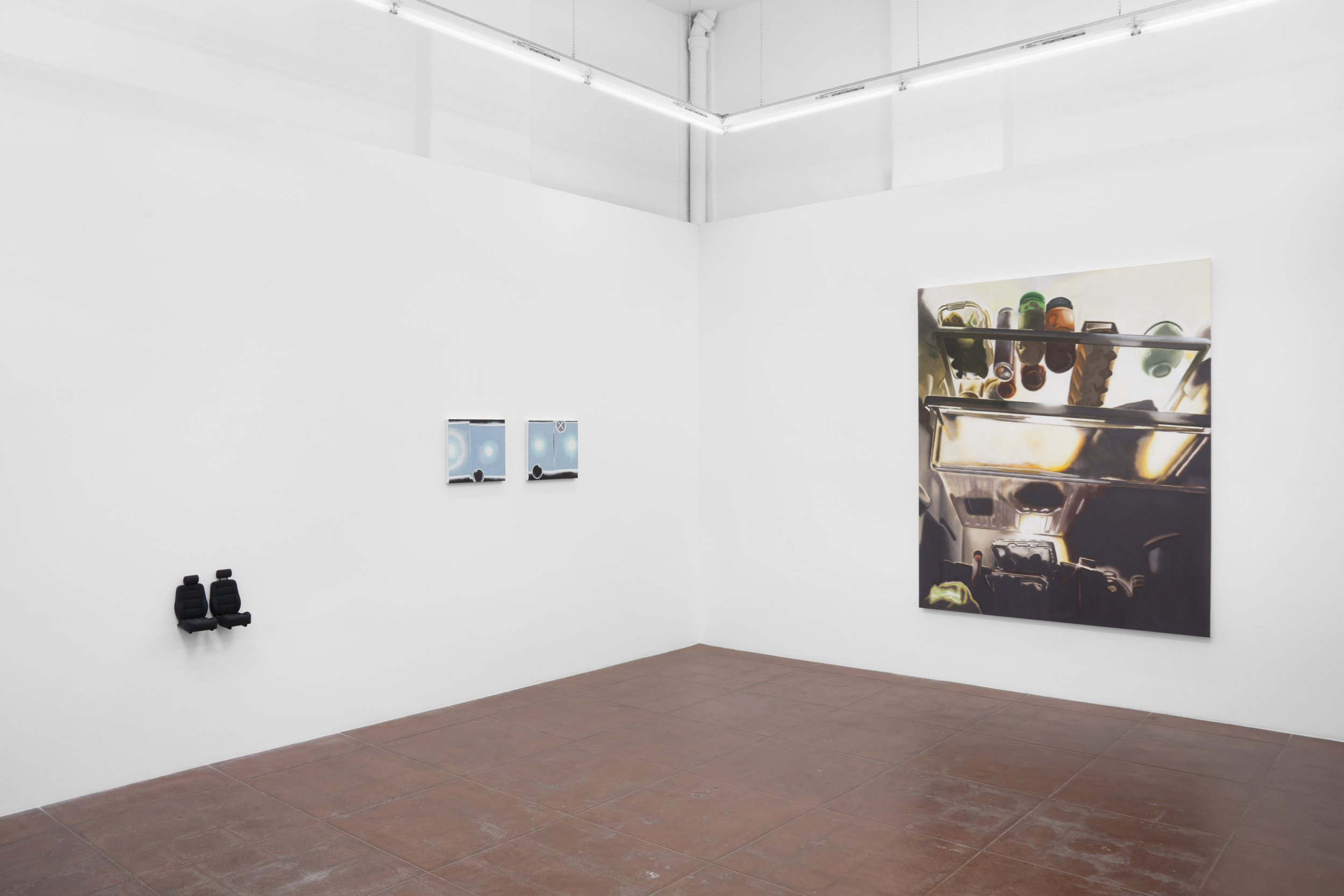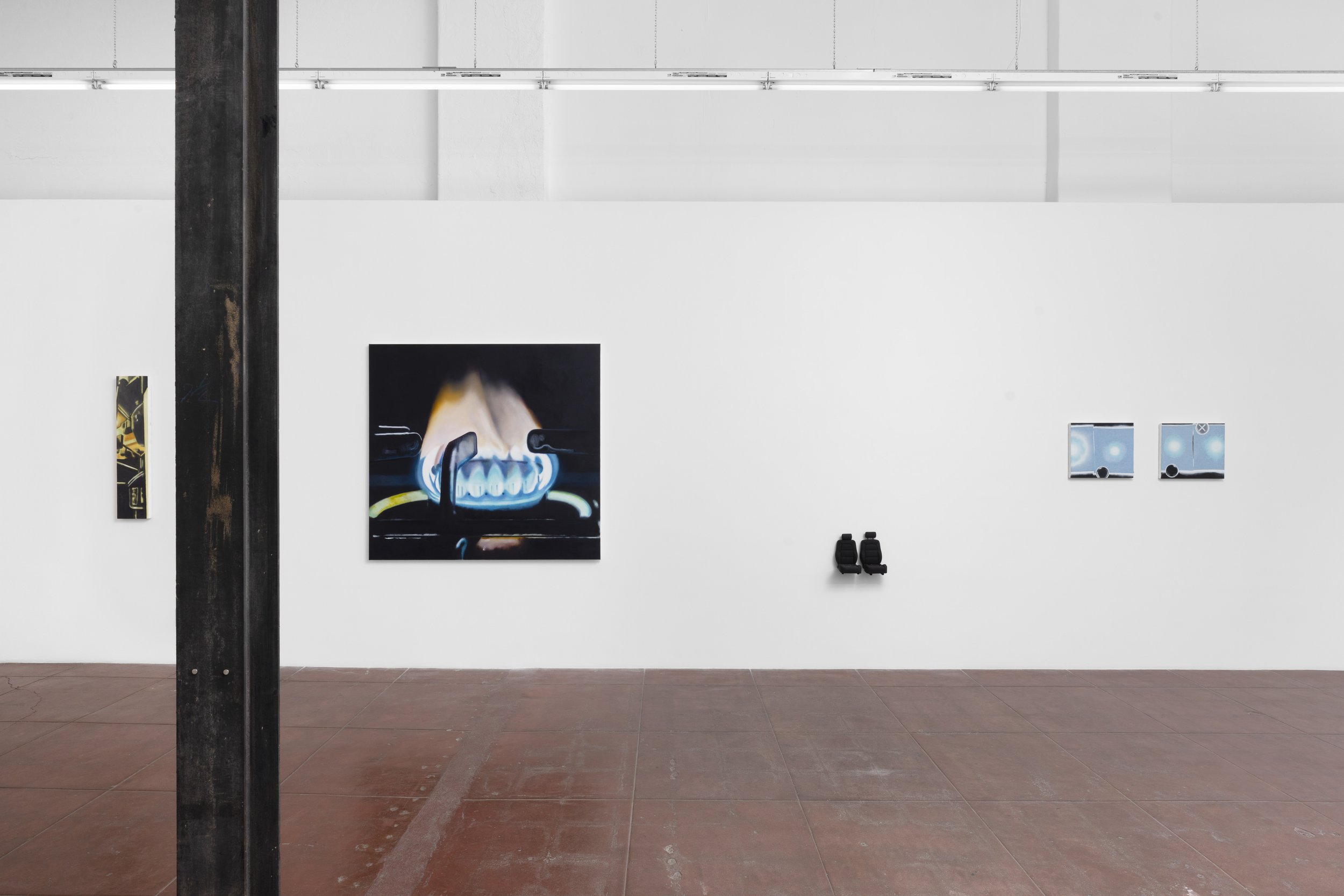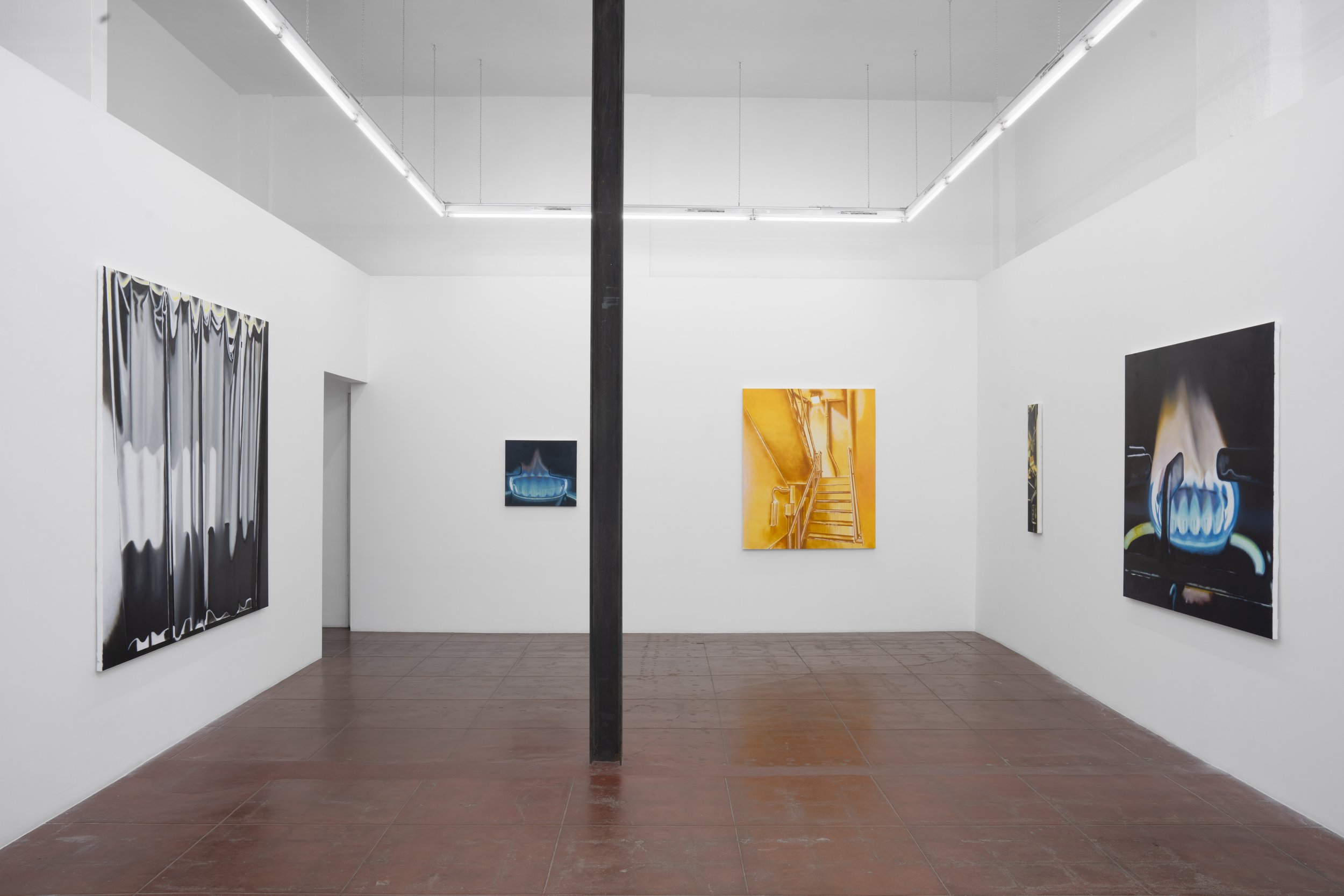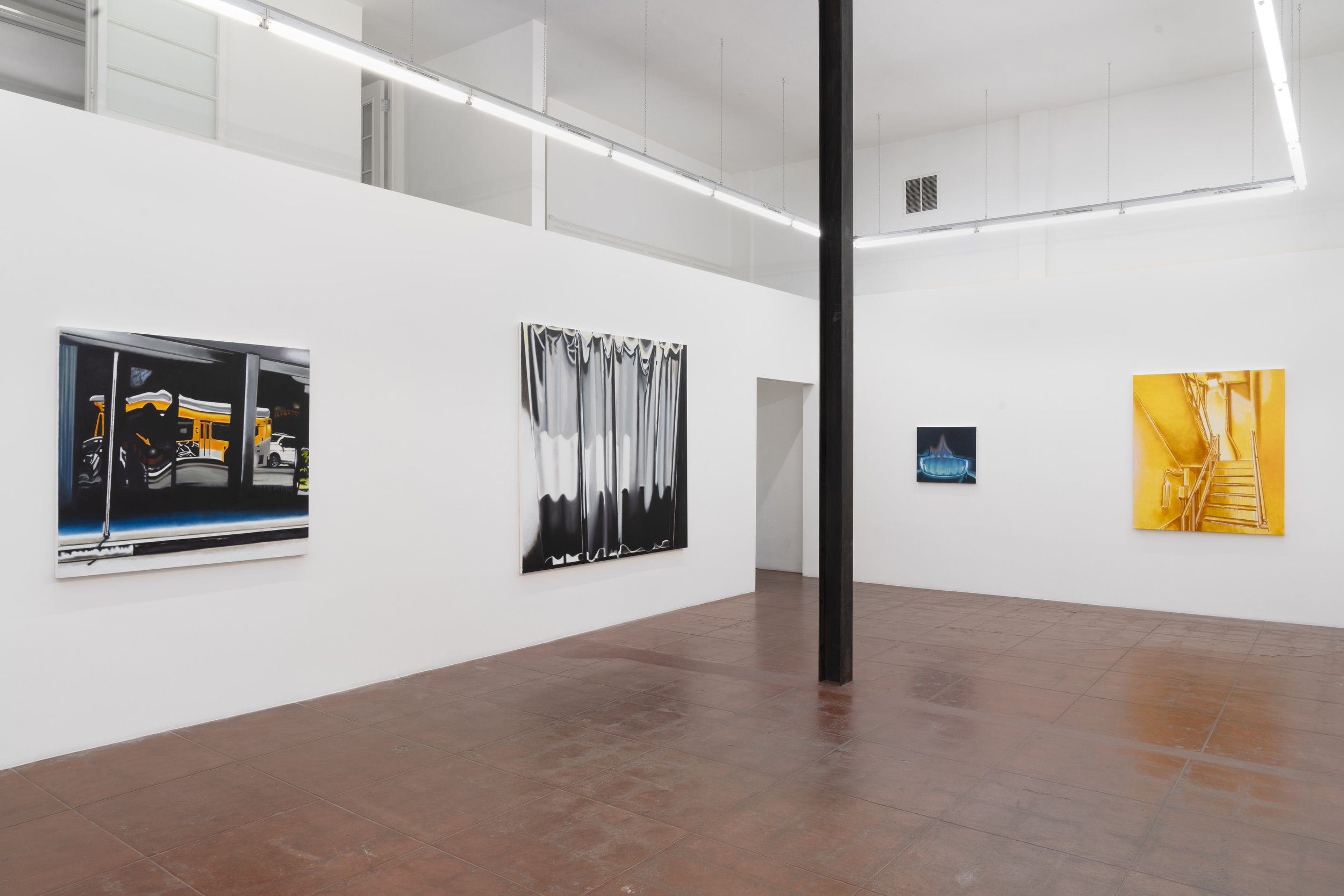September 30 - November 11, 2023
as-is, Los Angeles, CA
Heat Island
The appliances where I live speak at me. Insistent, alarmed, a little impatient. They project. “There’s something wrong with me,” they announce, when what they really mean is, “There’s something wrong with you.” Because I’ve left the fridge door hanging open again.
¶
The appliances in these paintings are not so noisy. Something in a well-touched painting implies quiet, the concentration of looking, taking time, doing it again until it’s right. But they are not exactly silent, either. I
can hear the static hum of the refrigerator; the click click click of the burner catching; the flame’s gusty arrival.
¶
The alarm the paintings signal does not spring out from the canvases; it feels baked into their images. This is the rhetorical mode in which they make their argument: calmly, objectively. Almost mathematically. As
if the equations of the paintings are verifiably true, but the end of all their operations express something –– just as it feels to be in real life, with increasingly extreme weather events –– absurd.
¶
They practice a kind of soft math, I thought, when I saw the canvases leaning and hanging on the long
wall of Rogers’ LA studio. Precise but scumbled.
¶
I had just spent time among redwoods in Northern California, and looking up at the bottles, cartons, and tupperware in his refrigerator paintings, I thought of the looming trees, and the way these paintings collapse the scale of one’s routine with the scale of the environment. The fire on the stove is the fire on the plains. An observable sense of wonder in the world –– its changing light, its states of flux, its modulations of color –– is simultaneous with a warning.
¶
On previous visits to Rogers’s studio, during bad fire seasons, I’d seen blankets of smoke coming off the
hills. On this trip, I had left behind the suffocatingly orange air of New York, where the light was dimmed by the smoke of Canada’s wildfires. These paintings live with — rather than name — disaster.
Life and disaster are collapsed in them, and this life/disaster is witnessable everywhere. In the way the reflection from a car window distorts the image of a passing truck, wavy the way heat bends our vision.
¶
The paintings are not sensational: they are cool to the touch. I sometimes think this and then second-guess
myself. The flames, for instance, are often painted in cool colors; hardly any warmth. But of course blue flame burns hotter than red. And this is a way heat invisibly imposes itself. This is a small joke the paintings play, as if I expect to see heat in order to believe it. As if the existence of snow in winter disproved the fact of melting ice caps.
¶
They add up. They accumulate, as heat does. Painted over and over again, Rogers’ images have a
searching quality, a restless dissatisfaction. Their meaning as a group reinforces each painting, because they are “about” routine and they enact routine. They describe actions and gestures that become, in their aggregation, life.
¶
People are absent in these images, recognizable only in the residue of their habits. The paintings present a
vision of the world that has been set in motion. No hand reaches in for the milk or lights the burner or wields the hammer. No one is there to shut the fridge door.
¶
What is the best way to hammer a nail, anyway? The paintings seem to answer: by touching the brush to
the surface.
-Henry Chapman, September 2023






